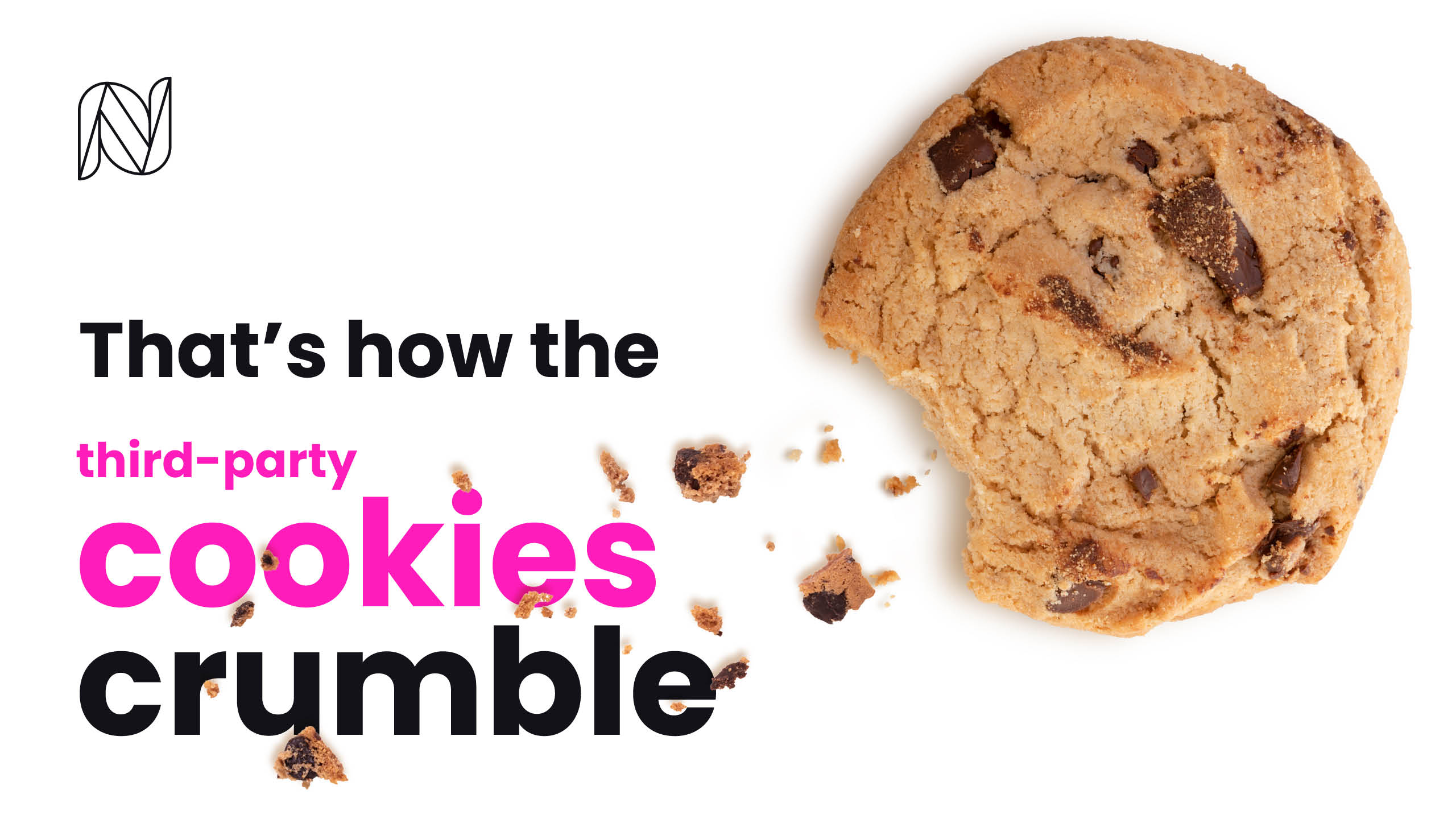Introduction:
In the ever-evolving landscape of digital marketing, one of the latest shifts is the phasing out of third-party cookies.
In this blog, we will explore what the crumble of third-party cookies means for brands and how they can adapt to thrive in a ‘cookieless’ future – with a particular focus on the re-emerging role of door drops in the marketing mix.
The Evolution of Online Tracking:
Picture third-party cookies as the secret ingredient in our digital dough. For years, third-party cookies have been an essential part of the digital marketing recipe for success.
Cookies allow advertisers to track users across different websites and serve personalised ads based on their browsing behaviour. Sounds pretty helpful, right?
Right, but rising concerns over privacy and data protection have prompted tech giants like Google, Apple, and Mozilla to take measures to roll out enhanced user privacy. This leaves marketers facing the challenge of baking a marketing strategy without this data-rich ingredient.
Justin Schuh – Director, Chrome Engineering

The Impact on Audience Targeting:
One of the biggest consequences of waving goodbye to third-party cookies is the challenge it poses to traditional audience targeting methods.
Cookies are like leaving a trail of crumbs for digital marketers to follow. Without them, marketers will no longer have the same granular insights into user behaviour across the web.
Although this seemingly makes it more difficult to deliver highly personalised and targeted ads, it’s also an opportunity for brands to sweep the floor with old strategies and clean up their approach to privacy.
Embracing First-Party Data:
As the timer sounds for third-party cookies, the spotlight now shines on first-party data – fresh eggs of information laid and collected directly from users through interactions with a brand’s website or app.
Getting closer to your customers allows you to gain first-hand insights into customer preferences, behaviours, and purchasing patterns.
John Lee – Microsoft Advertising’s Head of Evangelism
By late 2024, third-party cookies will no longer be on the menu. In its place, could the alternative tracking method, known as Customer Data Platforms (CDPs) give marketers the same great taste without the added privacy concerns?

What are Customer Data Platforms (CDPs)?
Customer Data Platforms (CDPs) are powerful tools that combine customer data from various sources into a centralised database (or mixing bowl!)
Unlike third-party cookies, which track user behaviour across different websites, CDPs focus on first-party data collected directly from your customers.
By mixing data from sources such as website interactions, email engagement, and purchase history to get a flavour of each customer’s journey.
To make this data even tastier, marketers will need to focus on strengthening relationships with customers and encouraging them to willingly share more personal data.
Incentivising users to provide data through loyalty programs, exclusive content, or personalised experiences will help to build a valuable first-party data profile. This is where mail steps in.
The Role of Door Drops in a ‘Cookieless’ Landscape:
Sprinkle mail into the mix. Door drops or direct mail campaigns can offer a tangible and impactful way to connect with consumers offline.
Mail has the unique ability to grab attention and deliver your message directly into the hands of your audience in their home.
It is also proven to drive commercial action. From letterbox to your website, mail brings your potential customers online where you can collect that sweet first-party data.
JICMAIL Mail Attention Study
JICMAIL can be used to provide demographic and geographic data sets, combining these with first-party insights, marketers can continue to create highly targeted and personalised door drop campaigns that engage specific audience segments.
This method isn’t just the icing on the cake, it’s also the cherry on the top! Direct mail and door drops bypass the challenges posed by the end of third-party cookies but also provide a physical touchpoint that stands out from the digital world and sticks around in the physical world.
Think about a time when you received a personalised voucher or coupon in the post. Whether the offer was tasty enough for you to make a purchase or not, it probably still brought you online and you’ve now been able to recall it later on.
The latest JICMail stats show the average door drop item will stay in the home for 5.6 days, during which time it will be revisited 3.2 times, whilst having a reach, within the household of 1.06!
Exploring New Technologies:
Marketers can spice up their strategies by embracing emerging technologies that prioritise privacy, such as artificial intelligence and machine learning.
AI and machine learning algorithms are designed to sieve through vast amounts of data, analyse and identify patterns, and make predictive insights.
This enables marketers to glean insights from user interactions, create lookalike personas and deliver targeted ads without relying on third-party cookies.
In the context of marketing, these technologies enable brands to extract actionable insights from complex datasets, uncover hidden trends, and make data-driven decisions with precision. It’s like building a flavour profile of your audience and recommending just the right wine pairing!
Konrad Feldman CEO and Co-founder of Quantcast

Conclusion:
Cracking down on third-party cookies doesn’t foretell bad fortune for marketers but marks a significant turning point in the world of digital marketing.
While the challenge lies ahead, this transition also presents an opportunity for marketers to re-measure their strategies, become more transparent with consumers, and embrace innovative technologies that prioritise user privacy.
Door drops, as a traditional yet highly effective method, complement these efforts, providing a tangible touchpoint in a ‘cookieless’ future.
–
At Nutshell Creative, we have always been print’s biggest advocates. In a future without third-party cookies, we believe mail is re-joining the party in a major way. Or the kitchen, after all, that’s where the real party always is!
Ready to future-proof your marketing? Is your marketing failing to rise? Want to whip up a winning strategy? Let’s talk.
hello@nutshellcreative.co.uk

